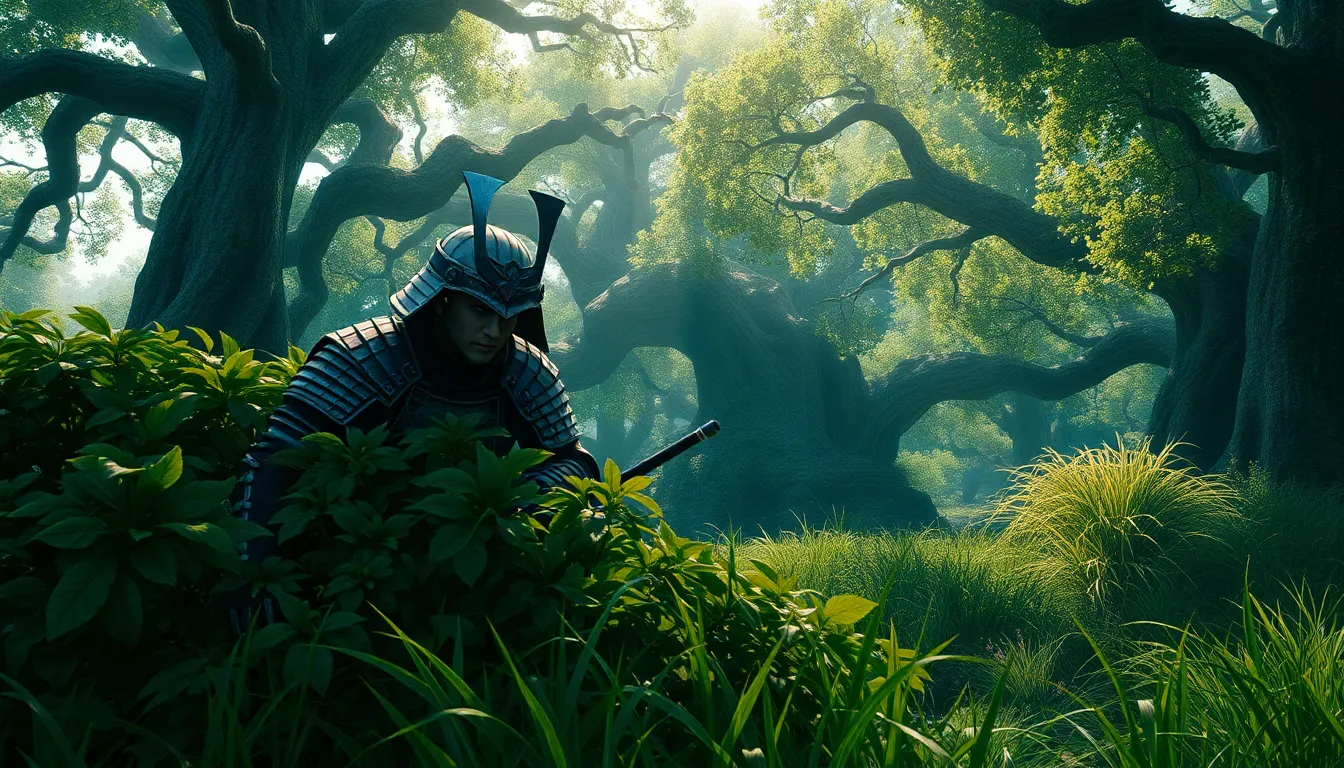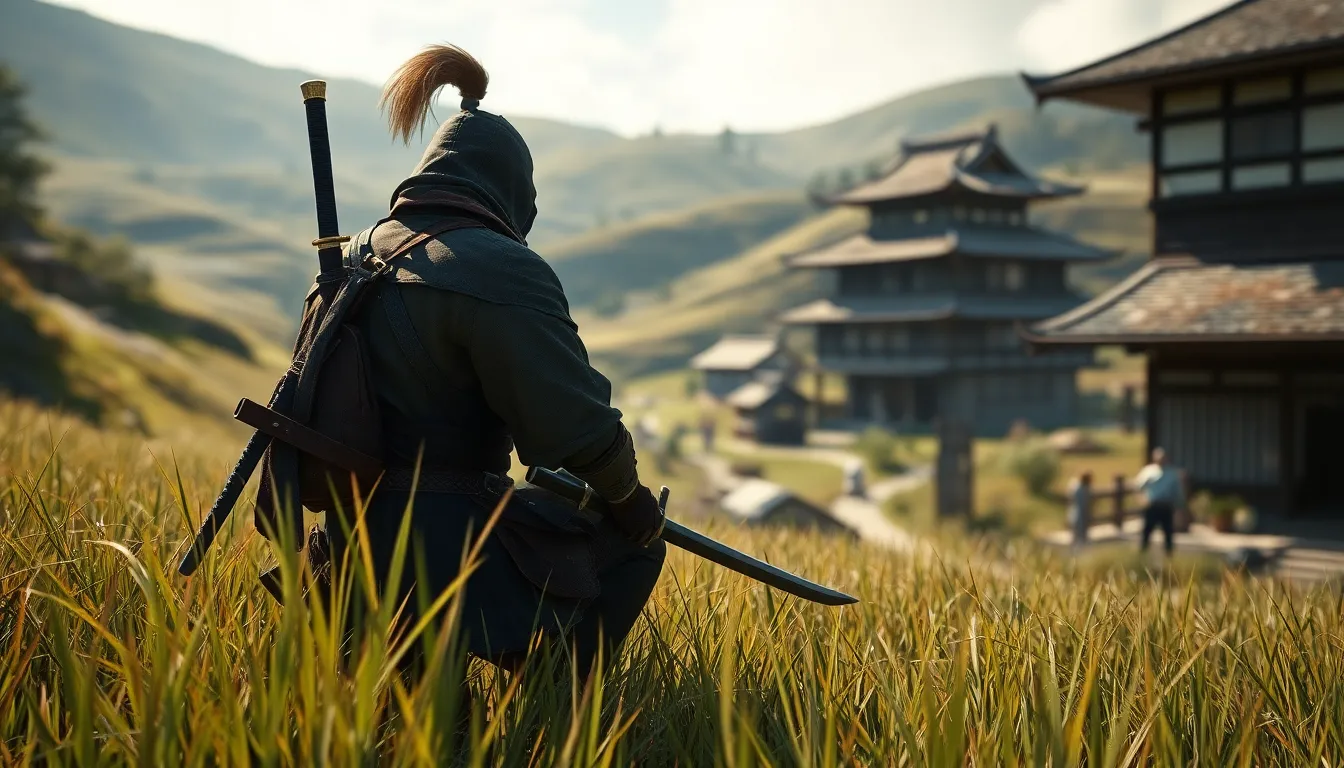In the vast and stunning world of Ghost of Tsushima, players find themselves not just wielding a katana but also mastering the art of stealth. Picture this: sneaking through tall grass, the wind whispering secrets of your enemies, while you plot their downfall like a ninja with a flair for the dramatic. It’s a thrilling dance between shadows and silence, where every step counts and every breath could mean life or death.
Stealth isn’t just an option; it’s a way of life on Tsushima. With a blend of strategy and skill, players can outsmart foes, turning the tide of battle without ever raising a sword. Whether it’s slipping past guards or launching surprise attacks, the stealth mechanics keep players on their toes and craving more. So grab your ghostly garb and get ready to embrace the shadows—because in Tsushima, the quiet ones always win.
Table of Contents
ToggleOverview of Ghost of Tsushima Stealth
Stealth mechanics in “Ghost of Tsushima” play a critical role in gameplay, enhancing the tactical experience. Players can utilize various strategies to navigate the game’s expansive environments silently. Options include sneaking through tall grass, utilizing distractions, and employing grappling hooks to gain advantageous positions.
Executing stealth attacks requires careful timing and precision. Players can perform assassination moves on unsuspecting enemies, decreasing the number of foes before combat begins. The game rewards strategic planning; taking out isolated guards proves advantageous, facilitating smoother navigation through fortified areas.
Environmental elements aid stealth tactics. Cover opportunities, like shadowy corners and thick bushes, assist players in remaining undetected. Players can provoke noise distractions, like throwing stones, to lure enemies away from intended paths.
Advancing through the story reveals increasingly complex challenges. Enemies grow more vigilant, demanding refined stealth skills for successful infiltration. Recognizing enemy patterns offers insight into movement and potential vulnerabilities.
Unlockable abilities enhance stealth gameplay. Skills such as Ghost and Phantom techniques expand stealth capabilities, allowing for even more creative approaches. Players can explore various playstyles, adapting their strategies to meet diverse combat scenarios.
Overall, the stealth system in “Ghost of Tsushima” emphasizes strategy and timing. Mastering these mechanics not only fosters a sense of immersion but also effectively contributes to overall survival in the brutal world of Tsushima.
Key Stealth Mechanics

Stealth mechanics in “Ghost of Tsushima” provide players with essential strategies for navigating the game’s environment. Mastering these skills enhances the overall gameplay experience.
Basic Stealth Controls
Basic stealth controls focus on silent movement and precise actions. Players crouch by pressing a designated button, allowing them to sneak past enemies unnoticed. Using the jump button helps to climb or traverse obstacles quietly. The action button prompts stealth kills, enabling players to execute enemies silently. Players also utilize distractions by throwing objects, diverting enemy attention away. Familiarizing with these controls establishes a strong foundation for effective stealth gameplay.
Advanced Techniques
Advanced techniques elevate stealth tactics beyond basic maneuvers. Players can employ the grappling hook to reach elevated positions for better vantage points. Using smoke bombs grants temporary concealment during intense situations. Additionally, staggering enemies with certain attacks creates opportunities for stealth eliminations. Players unlock Ghost and Phantom techniques as they progress, enhancing their stealth repertoire further. Combining these techniques allows for creative strategies against tougher enemies and complex scenarios.
Enemy Awareness and AI
Enemy awareness plays a crucial role in enhancing the stealth experience in “Ghost of Tsushima.” Players must understand how enemies detect stealthy players to navigate the game effectively.
Detecting Stealthy Players
Enemies utilize visual and auditory cues to identify players in stealth mode. Guards observe their surroundings carefully, scanning for movement or changes in the environment. Prolonged visibility can result in detection, so players should stay low and use cover. Additionally, sounds like footsteps or thrown objects can draw attention, prompting enemies to investigate. Awareness of these factors allows players to maneuver strategically, ensuring they remain undetected as they traverse the game’s landscapes.
How AI Reacts to Stealth
AI behavior adapts based on player actions in stealth scenarios. When a player is detected, enemies react by becoming alert and aggressive. They communicate with each other, forming search parties to locate the player. Canceling stealth actions leads to varying levels of aggression, from cautious searches to full-blown attacks. Players can exploit this reaction by creating distractions to divert attention elsewhere. By mastering the AI’s responses, players enhance their stealth tactics, ensuring they navigate the world of Tsushima effectively.
Stealth Strategies for Success
Stealth in “Ghost of Tsushima” relies heavily on the environment and available tools. Players must maximize their surroundings to succeed effectively.
Environmental Advantages
The world offers unique opportunities for stealth maneuvers. Tall grass acts as natural cover, allowing players to sneak past guards undetected. Using shadows, he or she can hide from vigilant enemies. Elevated positions provide advantageous sightlines while reducing visibility. Additionally, players should notice environmental features like rocks and shrubs that obscure movement. Mastering these elements enhances stealth tactics, enabling players to plan routes strategically. Even sound plays a role; nearby water or rustling foliage can mask footsteps. Recognizing these environmental advantages fosters a deeper stealth experience.
Utilizing Tools and Gadgets
Tools serve as vital assets in stealth gameplay. Smoke bombs create temporary obscurity, offering a chance to escape or reposition. Additionally, using distractions, like firecrackers, can lure enemies away from key areas. Players benefit from grappling hooks, granting access to rooftops and other vantage points for strategic kills. The use of these gadgets requires precision to avoid alerting nearby foes. Assassination techniques enable quick eliminations before engaging in larger combat scenarios. Investing in upgrades for these tools boosts effectiveness, allowing for more elaborate strategies. Embracing these gadgets transforms stealth into a powerful component of gameplay.
Comparing Stealth to Other Gameplay Styles
Stealth in “Ghost of Tsushima” distinguishes itself from other gameplay styles through its emphasis on strategy and timing. Players who embrace stealth can navigate through environments without direct confrontation, which contrasts sharply with confrontational combat approaches. Utilizing distractions and stealth tactics often leads to fewer enemy encounters, allowing players to plan attacks methodically.
Survival hinges on mastering stealth mechanics, unlike traditional combat, where players depend on weaponry and brute strength. Stealth players engage enemies silently, prioritizing eliminations before facing larger groups. Various strategies can enhance stealth effectiveness, ranging from crouching in tall grass to using shadows for concealment.
In contrast, players who prefer melee combat must rely on their combat skills and reflexes. Combat-focused gameplay encourages aggressive tactics, requiring players to fend off multiple enemies simultaneously. This style boasts dynamic action but offers less strategic depth compared to stealth gameplay.
Additionally, utilizing stealth rewards players with unique abilities and upgrades, enriching their gameplay. Differentiating situations call for specific approaches; stealth excels in situations demanding careful planning, while direct combat shines in chaotic battles. Advanced tactics, such as using grappling hooks or smoke bombs, provide creative opportunities, echoing the importance of environmental awareness.
Overall, enhancing stealth skills not only offers a distinct gameplay experience but also broadens tactical options within the game. Adopting a stealth approach often leads to greater immersion, showcasing the intricate design and opportunities presented in the world of Tsushima.
Stealth in “Ghost of Tsushima” transforms gameplay into an art of strategy and finesse. By mastering the mechanics of stealth players can navigate the treacherous world with confidence. The balance between patience and precision empowers them to outsmart enemies and control the battlefield.
Utilizing environmental advantages and tools enhances their stealth capabilities making every encounter unique. As players refine their skills they unlock new techniques that elevate their tactical options. Embracing stealth not only enriches the gaming experience but also showcases the depth of strategy available in Tsushima’s immersive landscape.
In this beautifully crafted world players discover that sometimes the shadows hold the key to victory.




